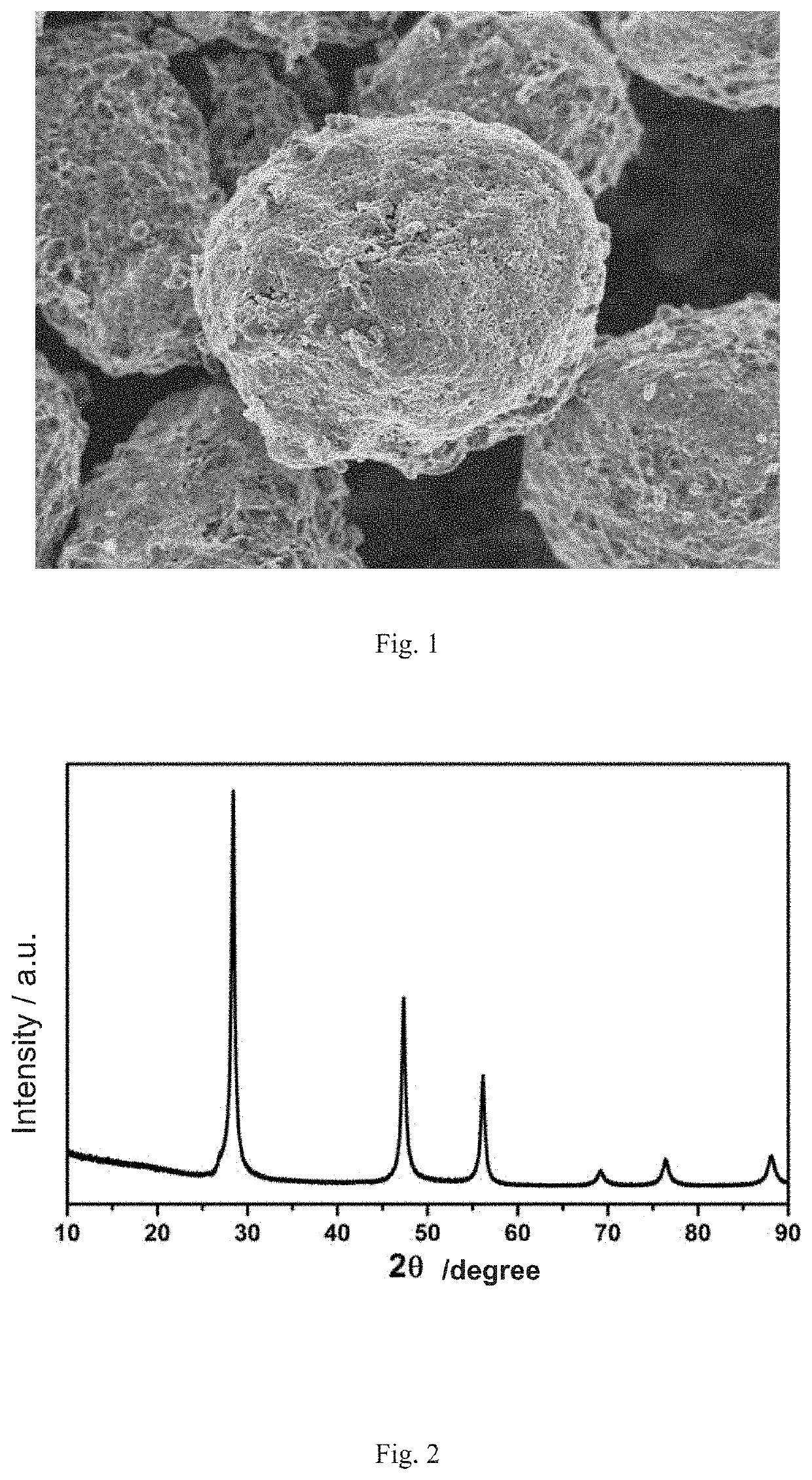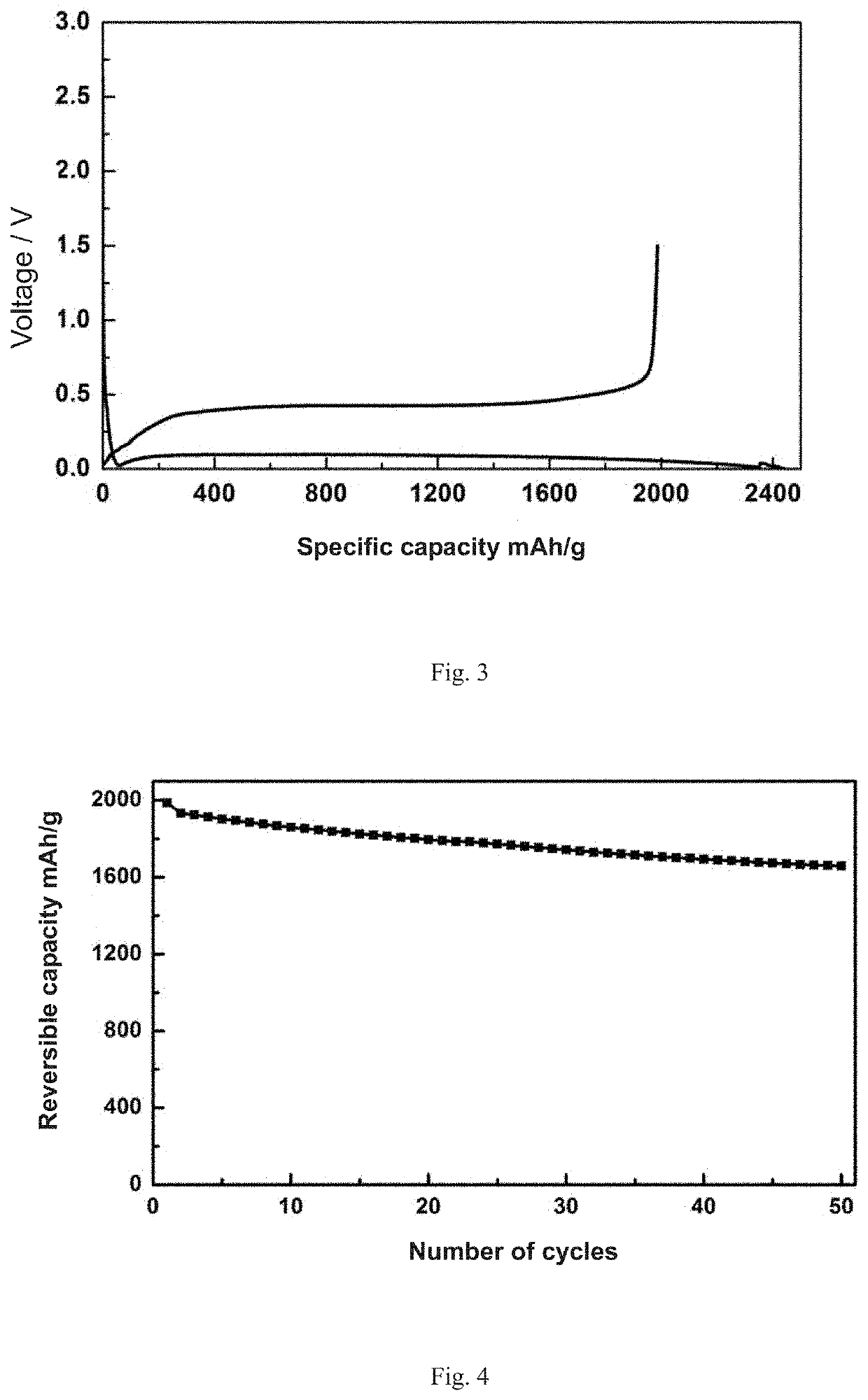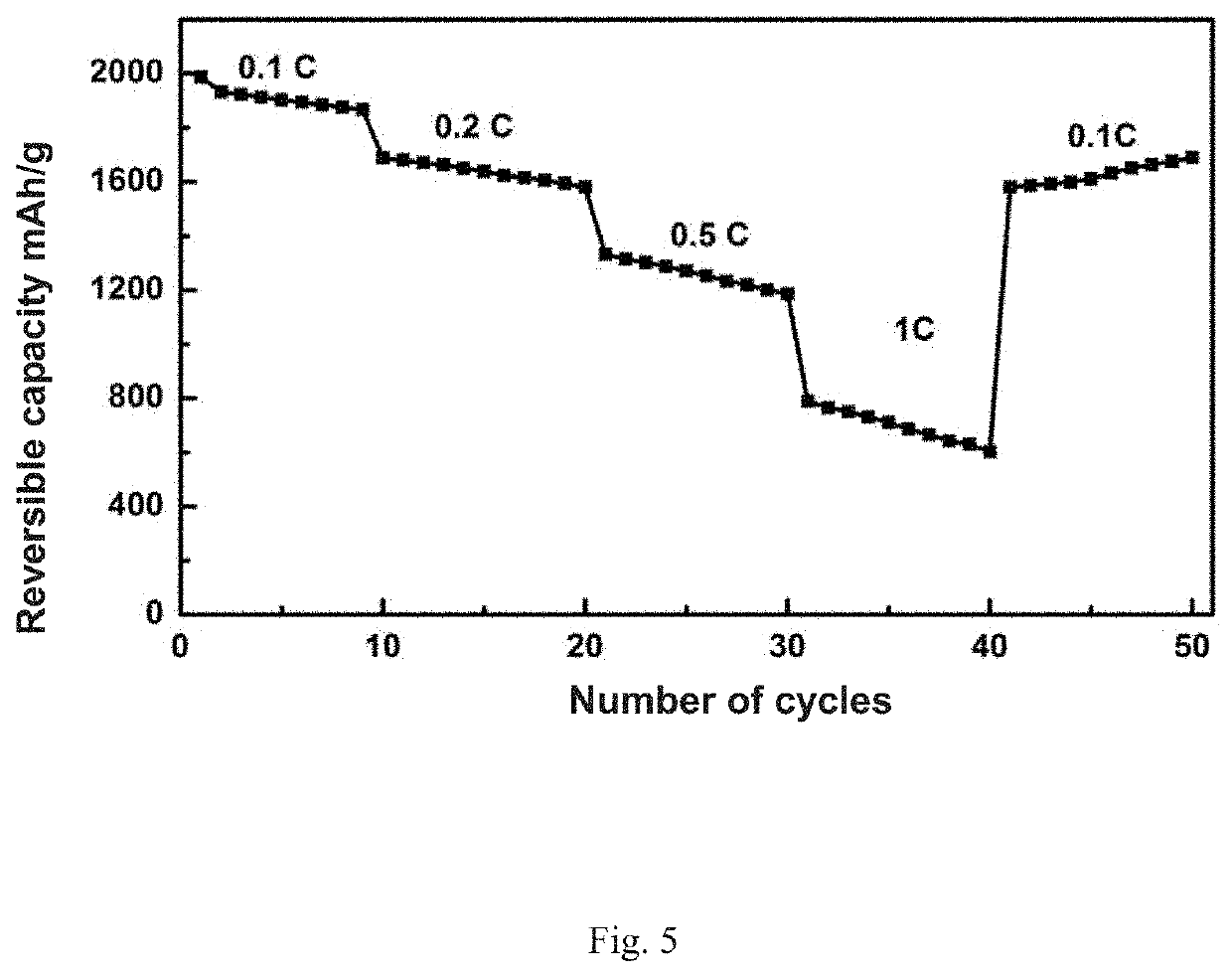Hollow/porous silicon-based composite material and preparation method thereof
a composite material and porous silicon technology, applied in the field of new energy materials, can solve the problems of graphite materials that cannot meet the demands of the market, sharp drop in cycle performance, low first-cycle efficiency, etc., and achieve high first-cycle efficiency, low expansion, and long cycle
- Summary
- Abstract
- Description
- Claims
- Application Information
AI Technical Summary
Benefits of technology
Problems solved by technology
Method used
Image
Examples
embodiment 1
[0041]20 g of nano silicon material with a particle size D50 of 50 nm, 4 g of NaCl, and 4 g of sucrose were added to 150 g of alcohol, and mixed and dispersed uniformly by a high-speed disperser to form a slurry, and the slurry was spray-dried to obtain a solid silicon-based composite material precursor. The obtained solid silicon-based composite material precursor was heat-treated, a high-purity protective gas nitrogen was introduced into an atmosphere furnace, and the precursor was heated up to 1050° C. at a rate of 1° C. / min and maintained at this temperature for 5h, and then naturally cooled to room temperature. The sintered material was then washed with water, filtered and dried to obtain a hollow / porous silicon-based composite material precursor. Next, 30% (calculated based on the percentage of the mass of the organic pyrolysis carbon to the total mass of the silicon-based composite material) of pitch, 70% of the hollow / porous silicon-based composite material precursor and alc...
embodiment 2
[0042]20 g of nano silicon material with a particle size D50 of 100 nm, 4 g of NaCl, and 4 g of sucrose were added to 150 g of alcohol, and mixed and dispersed uniformly by a high-speed disperser to form a slurry, and the slurry was spray-dried to obtain a solid silicon-based composite material precursor. The obtained solid silicon-based composite material precursor was heat-treated, a high-purity protective gas nitrogen was introduced into an atmosphere furnace, and the precursor was heated up to 900° C. at a rate of 1° C. / min and maintained at this temperature for 3h, and then naturally cooled to room temperature. The sintered material was then washed with water, filtered and dried to obtain a hollow / porous silicon-based composite material precursor. Next, 30% (calculated based on the percentage of the mass of the organic pyrolysis carbon to the total mass of the silicon-based composite material) of pitch, 70% of the hollow / porous silicon-based composite material precursor and alc...
embodiment 3
[0043]20 g of nano silicon material with a particle size D50 of 150 nm, 6 g of Na2CO3, and 4 g of sucrose were added to 150 g of propyl alcohol, and mixed and dispersed uniformly by a high-speed disperser to form a slurry, and the slurry was spray-dried to obtain a solid silicon-based composite material precursor. The obtained solid silicon-based composite material precursor was heat-treated, a high-purity protective gas nitrogen was introduced into an atmosphere furnace, and the precursor was heated up to 900° C. at a rate of 1° C. / min and maintained at this temperature for 3h, and then naturally cooled to room temperature. The sintered material was washed with water, filtered and dried to obtain a hollow / porous silicon-based composite material precursor. Next, 30% (calculated based on the percentage of the mass of the organic pyrolysis carbon to the total mass of the silicon-based composite material) of pitch, 70% of the hollow / porous silicon-based composite material precursor and...
PUM
 Login to View More
Login to View More Abstract
Description
Claims
Application Information
 Login to View More
Login to View More - R&D
- Intellectual Property
- Life Sciences
- Materials
- Tech Scout
- Unparalleled Data Quality
- Higher Quality Content
- 60% Fewer Hallucinations
Browse by: Latest US Patents, China's latest patents, Technical Efficacy Thesaurus, Application Domain, Technology Topic, Popular Technical Reports.
© 2025 PatSnap. All rights reserved.Legal|Privacy policy|Modern Slavery Act Transparency Statement|Sitemap|About US| Contact US: help@patsnap.com



